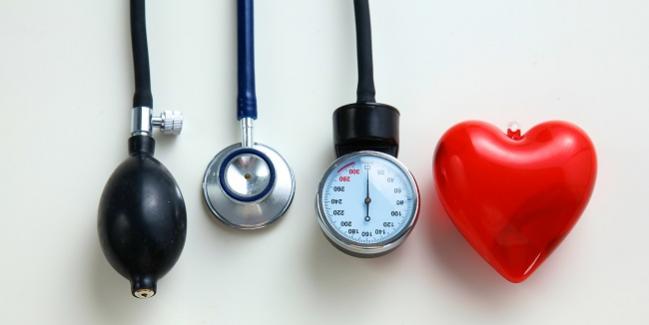Renal Denervation Lowers BP in Sham-Controlled Studies: Meta-Analysis
The reduction in BP was larger in second-generation trials, something one expert believes is attributable to better technology and trial design.

A new meta-analysis including only sham-controlled studies of renal sympathetic denervation for the treatment of hypertension shows that the catheter-based procedure significantly lowers systolic and diastolic blood pressure.
Follow-up in the studies was relatively short, ranging from 2 to 6 months, but renal denervation lowered 24-hour ambulatory systolic blood pressure by 3.65 mm Hg and diastolic blood pressure by 1.71 mm Hg. When the analysis was restricted to second-generation trials only—RADIANCE-HTN SOLO, SPYRAL HTN-OFF MED, and SYPRAL HTN-ON MED—renal denervation reduced 24-hour ambulatory systolic and diastolic blood pressure by 4.85 and 2.98 mm Hg, respectively.
Senior investigator Herbert Aronow, MD (Warren Alpert Medical School of Brown University, Providence, RI), said that blood pressure reduction “is a means to end”—the goal being to reduce the risk of death, MI, or stroke, as well as kidney disease—but that the reduction observed in the meta-analysis is clinically meaningful.
“It’s not just about lowering blood pressure for the sake of lowering it,” he told TCTMD. “Many people have blood pressure elevated significantly and even a small reduction beyond what they might have achieved on medication is likely to effect a significant reduction in adverse events. We know this from multiple trials of drug therapy for hypertension.”
Published online ahead of the April 9, 2019, issue of the Journal of the American College of Cardiology, the meta-analysis includes the second-generation studies, which were all positive, as well the large SYMPLICITY HTN-3 trial, the single-center Danish ReSET study, and a 2014 German study. The Danish and German sham-controlled trials were both small—less than 70 patients in each—and negative. SYMPLICITY HTN-3, on the other hand, was a larger study, but it too was negative and responsible for cooling some of the early enthusiasm for renal denervation. The new meta-analysis includes 582 patients randomized to renal denervation and 395 to the sham procedure.
In line with the 24-hour ambulatory blood pressure reduction, renal denervation also reduced office systolic and diastolic blood pressure 5.53 and 3.37 mm Hg, respectively. Limiting the analysis to RADIANCE-HTN SOLO and the two SPYRAL trials, renal denervation reduced office systolic and diastolic blood pressure 7.07 and 4.25 mm Hg, respectively. Compared with first-generation studies, there was a significantly greater reduction in daytime ambulatory systolic blood pressure in the second-generation studies (6.12 vs 2.14 mm Hg; P = 0.04 for interaction), but the interaction was not significant for 24-hour ambulatory systolic blood pressure.
Aronow said SYMPLICITY HTN-3 forced many in the field to pause and take stock as to what went wrong.
“There was a lot of thought that went into why that might have been,” he said in reference to the negative result. “Did we not have the right patients? Was there something about the device or devices used? Was it something about the outcomes or the operators? This latest round of trials, the second-generation trials, have all made modifications to the earlier trial design that we think may be more favorable to studying whether renal denervation is effective in lowering blood pressure.”
These second-generation trials excluded patients with isolated systolic hypertension, required procedures to be done by experienced operators only, used advanced techniques and catheters for ablation, modified medical therapy to better assess the treatment effect, and used ambulatory blood pressure as the endpoint. In RADIANCE, operators performed a circumferential ablation of the renal artery using ultrasound energy (Paradise; ReCor Medical), while the SPYRAL trial investigators performed radiofrequency ablations in a spiral pattern in the four quadrants of the renal artery and distal branch vessels (Spyral; Medtronic).
Aronow said the changes to the devices make it easier to deliver energy to effectively ablate the renal sympathetic nerves, but one of the remaining limitations in the field is the absence of real-time feedback to operators. As a result, physicians don’t know if they’ve achieved a good result with the ablation. “The idea that we might ablate more extensively seems attractive, and we think the patients who were ablated more extensively might have seen a greater benefit in the past,” he said.
On the whole, Aronow said that he is optimistic about the technology, particularly given the recent spate of positive, albeit small, sham-controlled pilot studies. “I can only imagine that we’ll see reductions [in blood pressure] as great or greater as we evolve the technology, patient selection, and our ability to select the correct outcomes.”
Michael O’Riordan is the Managing Editor for TCTMD. He completed his undergraduate degrees at Queen’s University in Kingston, ON, and…
Read Full BioSources
Sardar P, Bhatt DL, Kirtane AJ, et al. Sham-controlled randomized trials of catheter-based renal denervation in patients with hypertension. J Am Coll Cardiol. 2019;73:1633-1642.
Disclosures
- Aronow reports no relevant conflicts of interest.


Comments